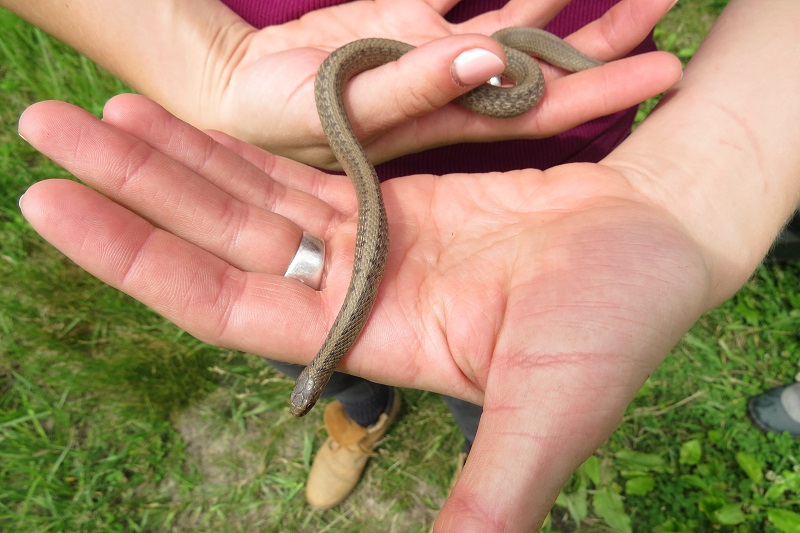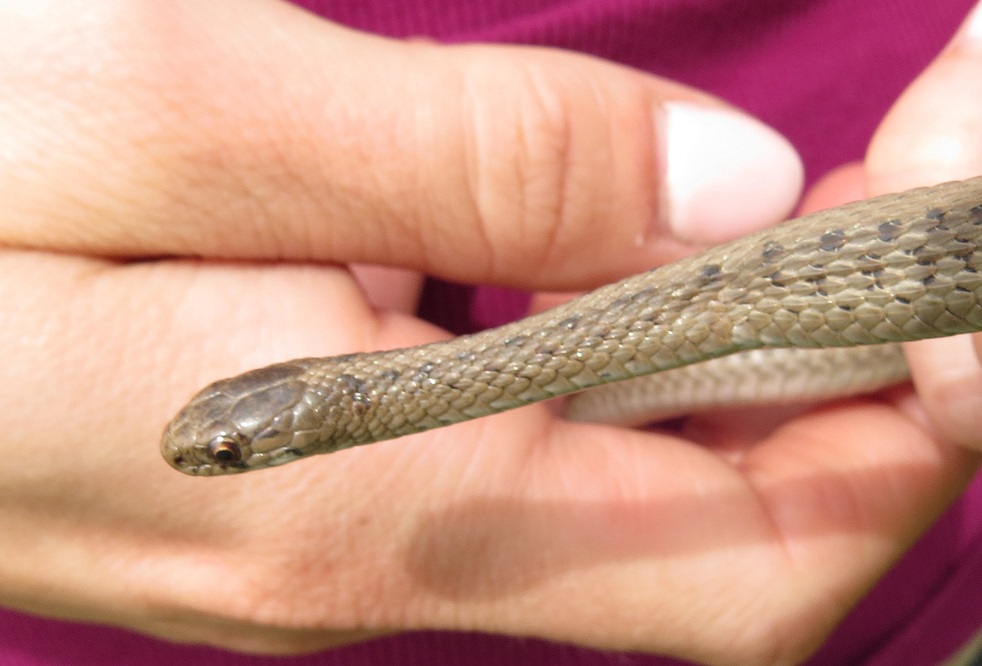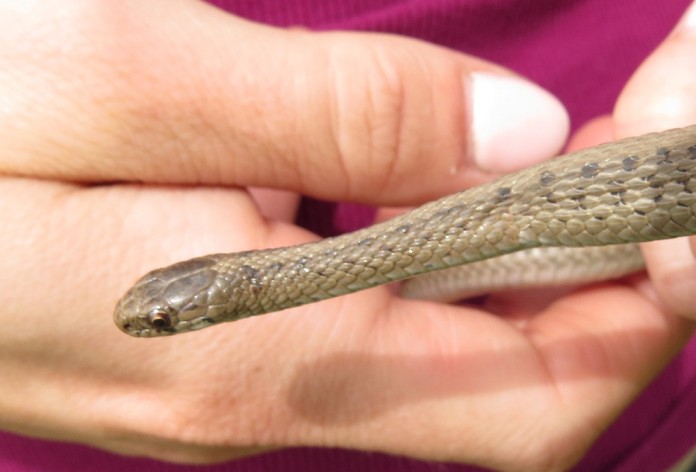
It was a beautiful day for a float trip down the Raccoon. I was with Mike Delaney, his daughter, Allie, and her boyfriend, Jake. The air was warm, and white wispy cirrus clouds were high in the sky. We paddled the canoes towards a recently exposed sandbar that would be a good spot to stretch our legs and look for artifacts that may have been deposited since the last high water.
At the water’s edge I was surprised to see a small snake near a pool of water on the sand. When we approached, it began to move toward the vegetation of the riverbank. We circled it to block its path. Mike said he wanted it to take to his garden; when he went toward the snake it immediately went into its defensive behavior. It flattened its self out to make it seem larger.
When Mike reached for it, it coiled and attempted to strike, but we knew it was harmless. It was less than a foot long and the diameter of a pencil. The little reptile did not even have teeth.
When Mike finally picked it up to get a closer look, it did its final defensive action: it defecated on his hand. This action will deter many of the snake’s predators.
It was a Dekay’s brown snake, a very common snake in Iowa and the eastern United States. Its range is east of the Rocky Mountains from southern Canada to the northern part of Mexico. I have seen them in the Boundary Waters of Northern Minnesota, in the Ozarks and across Iowa.
The brown snake is very seldom more than 15 inches long. Its color is grayish brown with a lighter streak on its back, bordered with brown blotches. The belly of the snake is a beige color with scattered black dots on the sides.
Brown snakes live under rocks, logs and woodpiles. They spend a lot of time underground, but during heavy rains they will come out into the open.
They feed upon insects, grubs, earthworms, and snails. They are especially helpful to humans because they help control insect pests in gardens. This snake had some bulges in its abdomen, so it must have been feeding on something on the sandbar.
The snakes hunt mostly at night. They use their sense of smell, located on their forked tongue, to hunt for food. They are also sensitive to vibration in the ground.
They use all of their sense organs to stay alert for animals that prey upon them. Some of their predators are large bullfrogs, larger snakes, birds, weasels and domestic cats.
The brown snake, like the garter snake, gives live birth to 12 to 20 young in midsummer. She does not give them any special care or food, but many of the young will stay near her for a few days.
The encounter with the snake was a pleasant interlude during the canoe trip. I took some pictures of it for identification, and then we let the snake go in Mike’s garden near the Raccoon River.
If you see one of these little brown snakes in your garden, don’t kill it. It is harmless, and it is feeding on harmful pests in your garden.


















